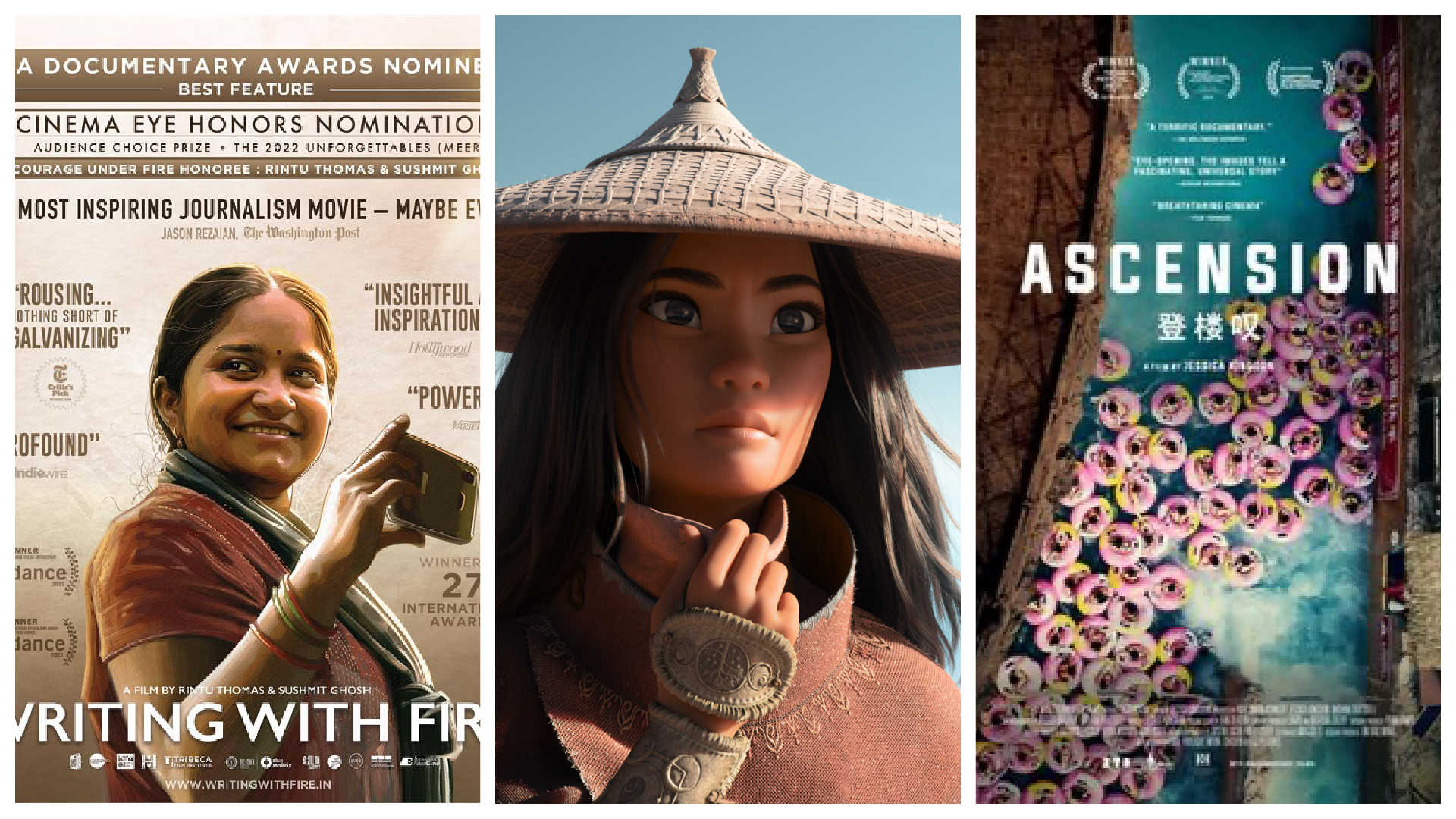Asian And Asian American Representation: The Need For Deeper Storytelling

Table of Contents
The Prevalence of Stereotypes and Tokenism in Media
The media's depiction of Asians and Asian Americans is riddled with harmful stereotypes and tokenism, perpetuating harmful misconceptions and limiting authentic representation.
The "Model Minority" Myth and its Harmful Effects
The insidious "model minority" myth paints Asians and Asian Americans as inherently intelligent, hardworking, and docile. This seemingly positive stereotype is deeply damaging:
- In movies and TV: Asian characters are often depicted as hyper-intelligent scientists, engineers, or mathematicians, lacking complex personalities or emotional depth. Think of the perpetually successful, emotionless tech genius.
- In advertising: The model minority myth is used to sell products, reinforcing the idea that Asian Americans are inherently successful and don't need support.
- The pressure to conform: This stereotype creates immense pressure on Asian Americans to constantly achieve, leading to feelings of inadequacy and shame if they don't meet these unrealistic expectations. It silences struggles and marginalizes those who don't fit the mold.
- Impact on Mental Health: The pressure to uphold this image contributes significantly to high rates of anxiety, depression, and burnout within the Asian American community.
This harmful stereotype overshadows the struggles and diversity within the Asian American community. It is crucial to move beyond this reductive portrayal and showcase the full spectrum of Asian American experiences.
One-Dimensional Characters and Lack of Diversity
Beyond the "model minority" myth, Asian characters are often relegated to one-dimensional roles:
- Stereotypical Roles: The nerdy scientist, the submissive wife, the mystical martial arts expert—these are just a few examples of the limited and often stereotypical roles available to Asian actors.
- Lack of Range: The lack of diverse roles prevents Asian actors from showcasing their full range and prevents audiences from seeing the complexity of Asian experiences.
- Ignoring Internal Diversity: The vast cultural differences between various Asian nationalities and ethnicities are frequently ignored, leading to a homogenized and inaccurate portrayal. The experiences of a Korean American are vastly different from those of a Vietnamese American, for example.
The "Forever Foreigner" trope and its impact
The "forever foreigner" trope portrays Asian characters as perpetually foreign, regardless of their citizenship or length of residence in the US.
- Perpetual Otherness: This trope contributes to feelings of otherness and alienation, even for those born and raised in America.
- Impact on Belonging: It reinforces the sense of not truly belonging and constantly having to prove one's American identity.
- Examples in Media: Many films and TV shows subtly (or not so subtly) emphasize an Asian character's foreignness, highlighting their accent or cultural practices as markers of difference, rather than simply aspects of their identity.
The Importance of Authentic Storytelling and Diverse Voices
To combat harmful stereotypes and create a more accurate and representative portrayal, authentic storytelling and diverse voices behind the camera are critical.
Amplifying Asian and Asian American Voices Behind the Camera
The lack of Asian and Asian American representation behind the camera is a significant obstacle to authentic storytelling.
- Importance of diverse creators: Having Asian and Asian American writers, directors, and producers involved in the creative process ensures that stories are told from authentic perspectives and avoids perpetuating harmful stereotypes.
- Impact on Narratives: Diverse perspectives shape narratives, ensuring a more complete and nuanced understanding of Asian and Asian American experiences.
- Successful Examples: The success of shows and films created and led by Asian and Asian American creatives demonstrates the power of authentic storytelling.
Showcasing the Nuances of Asian Cultures and Experiences
Authentic storytelling requires acknowledging and showcasing the vast diversity of Asian cultures and experiences.
- Importance of cultural nuance: Broad generalizations about Asian cultures are harmful and inaccurate. Each culture has its own unique history, traditions, and values.
- Effective portrayals: Films and shows that successfully depict the nuances of Asian cultures and experiences avoid stereotypes and create more complex and relatable characters.
- Context is Key: Understanding the cultural context is essential to accurately portraying Asian characters and stories.
Moving Beyond the Trauma Narrative
While acknowledging historical trauma and challenges faced by Asian communities is vital, it's crucial to move beyond solely defining Asian stories by pain and suffering.
- Celebrating Resilience and Joy: Asian stories should also celebrate resilience, joy, success, and the full spectrum of human experience.
- Balanced Representation: A balanced representation shows both the struggles and triumphs of Asian Americans, creating a richer and more complete picture.
- Positive Counter-Narratives: Stories that focus on positive aspects of Asian American life provide vital counter-narratives to harmful stereotypes.
Strategies for Improving Asian and Asian American Representation
Improving Asian and Asian American representation requires a multi-pronged approach.
Increased Funding and Opportunities for Asian Creatives
A lack of funding and opportunities significantly limits the number of Asian and Asian American stories being told.
- Need for Support: More funding and support are crucial for projects created by Asian and Asian American creators.
- Diversity Initiatives: Initiatives that foster diversity and inclusion within the film and television industry are essential.
- Inclusive Hiring Practices: Studios and production companies need to actively seek out and hire Asian and Asian American talent at all levels.
Audience Demand and Consumer Activism
Audience demand plays a significant role in shaping media representation.
- Power of Consumer Choice: Consumers have the power to support projects that accurately represent Asian communities and to boycott those that perpetuate stereotypes.
- Promoting Diverse Media: Actively seeking out and promoting diverse media sends a strong message to the industry.
- Advocating for Change: Viewers can use their voices to demand better representation and hold media companies accountable.
Collaboration and Allyship Within the Industry
Collaboration and allyship between Asian and non-Asian creators are essential to creating a more inclusive industry.
- Importance of Collaboration: Working together across different backgrounds and perspectives can lead to richer and more authentic storytelling.
- Building Bridges: Allyship involves actively supporting and amplifying the voices of Asian and Asian American creators.
- Equitable Representation: Creating an equitable industry requires a collective effort to ensure that everyone has a fair opportunity to tell their stories.
Conclusion: The Future of Asian and Asian American Representation
To achieve a more accurate and representative portrayal of Asian and Asian American experiences, we must prioritize deeper, more nuanced storytelling. This requires amplifying Asian and Asian American voices behind the camera, showcasing the diverse range of experiences within the community, and moving beyond simplistic and harmful stereotypes. We need increased funding and opportunities for Asian creatives, stronger audience demand for authentic representation, and meaningful allyship within the industry.
The future of Asian and Asian American representation rests on the collective action of creators, consumers, and allies. Let's support Asian and Asian American creators, demand better representation in media, and engage in ongoing conversations about this crucial issue. The need for deeper and more meaningful storytelling about Asian and Asian American experiences is not just a matter of representation; it's a matter of social justice and building a more inclusive society. Let's make it happen.

Featured Posts
-
 Jessica Simpson And Eric Johnson Spotted Together Amidst Separation Rumors
May 12, 2025
Jessica Simpson And Eric Johnson Spotted Together Amidst Separation Rumors
May 12, 2025 -
 Itv 4 Kojak Episode Guide And Air Times
May 12, 2025
Itv 4 Kojak Episode Guide And Air Times
May 12, 2025 -
 Payton Pritchards Journey From Childhood Dreams To Career Triumphs
May 12, 2025
Payton Pritchards Journey From Childhood Dreams To Career Triumphs
May 12, 2025 -
 Le Regret De Stallone L Heritage Controverse De Cobra
May 12, 2025
Le Regret De Stallone L Heritage Controverse De Cobra
May 12, 2025 -
 Addressing The Rumors Did Jessica Simpson Promote Snake Sperm Consumption
May 12, 2025
Addressing The Rumors Did Jessica Simpson Promote Snake Sperm Consumption
May 12, 2025
